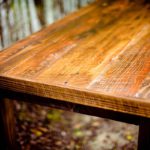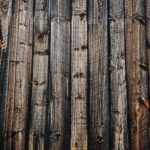
If your deck becomes discoloured and discoloured, the coloured waterproof material (also called toner) will restore the natural colour of the wood. It is important to remember that no matter how new your hardwood deck is and the source of the mahogany wood, wood is an organic product, and depending on how exposed it is to the elements, it will gradually turn silver grey.
So, if you’re not sure why to use clear decking oil on a mahogany or hardwood deck, start with this. By answering these questions, you can decide whether you want to apply your chosen oil to the entire deck or choose the oil that works best for your wood.
Whether your deck is brand new, needs some maintenance, or a complete refurbishment, lubrication is extremely important in protecting the wood and can really help it stand out.

If your deck is oiled, it is best to use a different oil rather than trying to remove it and replace it with wood stain or paint. Oils are, after all, the best product for decking, because they penetrate the wood and protect it much better and longer than just on the surface, and allow the beautiful natural texture of the wood to shine.
Instead of trying to remove the oily coating and replace it with something that won’t work well, like wood stain or varnish, it’s always easier to remove the non-oily coating and replace it with terrace oil. For example, a flooring paint stripper is a great way to get rid of many stains and paint on your flooring, so you can replace it with delicious oil.
If your patio has been treated with a product that forms a protective film on the surface, sometimes cracking, flaking or flaking, it must be completely removed before adding the terrace oil.
Simply clean the surface thoroughly with a good quality terrace cleaner that will remove dirt, then grease it again. Use a terrace oil applicator or a soft, clean brush to liberally apply your chosen terrace oil onto the deck. Make sure to use a high-quality brush when applying the black timber stain to the deck.
You will need liquor to remove and clean oily stains. For acrylic resins, you can clean tools with water. Many professionals use oily stains and last longer than water-based stains, but oily stains can only be cleaned with paint solvents and will only adhere to wood pretreated with oily products.
Water-based stains are not as resistant as oil-based stains, but water-based products are more environmentally friendly, can be washed with water, and may stick to wood surfaces that have been treated with water-based or oily stains.
Be aware that some of the cheaper products only use bleach, which can be harmful to the wood itself and even create additional problems when trying to stain or oil the deck later.
Higher quality products will use something like citric acid, which is much more gentle on wood and does not harm the plants and soil around and under the deck.
After all repairs have been completed and the deck has been cleaned, it is time for protective treatments. If the deck is allowed to dry out and then restore to its original shape, the piles can always be flattened before painting.
On the other hand, if water drips while standing on the deck, the deck does not need to be painted. Especially if you do not have high requirements for cleaning, if your deck has been treated in the past 12 months, then no matter the age of the material, you can still not use this kind of light washing.
Bridge cleaners can also be used on bridges with pre-existing stains that are covered in the same brand and colour as the stain.
There are special deck cleaners designed to lighten and remove old paints and translucent stains. A similar deck rejuvenation project can be completed in two days, but it is best to spread the work over two weekends to make sure the wood is completely dry before staining.




